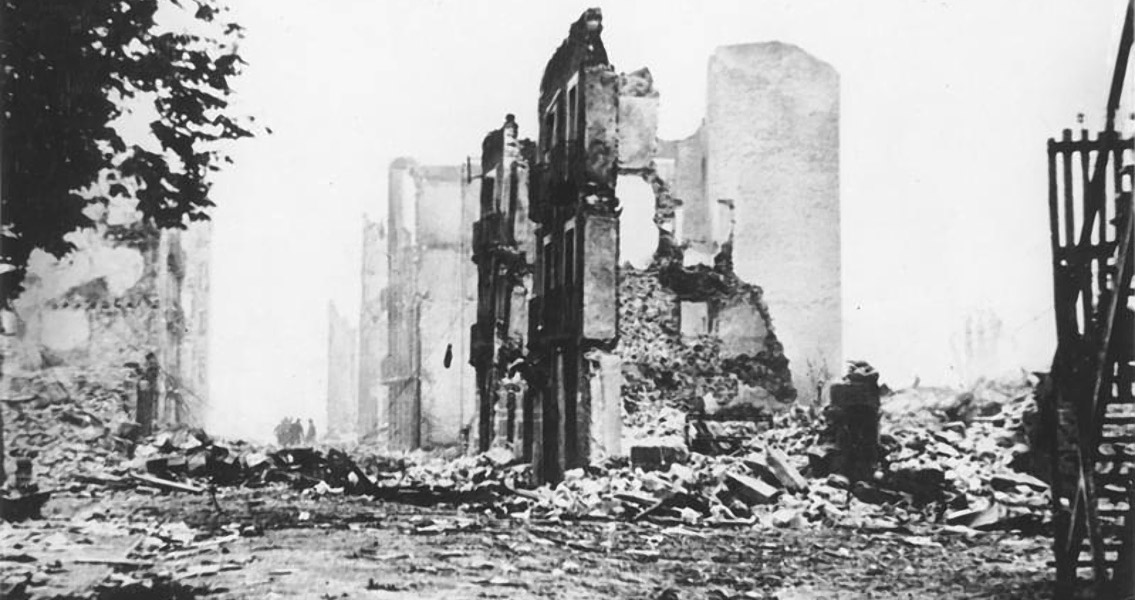<![CDATA[It was market day in Guernica on 25th April, 1937. Mondays were the busiest day in the city, the weekly market bringing people from the surrounding countryside into the town square. Thousands of people strolled the streets of the small Basque city, until then a largely untouched haven from the horrors of the civil war which had divided Spain so violently. This hitherto peaceful existence however, was soon to be shattered as the city of 5,000 people felt the full force of a new kind of warfare. Just before 4:30 pm, the city's church bells started ringing, an unusual occurrence which the city's population soon realised was an air raid warning. Guernica's annihilation was one of the most shocking atrocities of the twentieth century, a bloody precursor to what would come in the Second World War just two years later. The Spanish Civil War was used by both the German and Italian military to test out their new technologies and strategies. In Guernica, the Luftwaffe heralded the arrival of a new kind of warfare, the brutal destruction of aerial bombing. The devastation inspired Picasso to create one of his most famous works, his 'Guernica' attempting to capture the senseless, chaotic destruction he had seen from a far unfold in his homeland. The Spanish Civil War had been horrendous, and Guernica's fate encapsulated the violent chaos that had descended over the country. It is difficult to imagine now the sheer shock the bombing of Guernica caused, the devastation of the Second World War and subsequent conflicts perhaps desensitizing us. The Luftwaffe's strike however, marked the first time an entire city had been attacked by aerial bombardment, and the ferocity directed at civilians was truly terrifying. As the church bells continued to ring, German aircraft descended on the city, twenty five Heinkel bombers alongside around twenty fighters in escort. They commenced a series of strafing runs over Guernica, making repeated, deadly passes. Reports claim they dropped around one hundred thousand pounds worth of explosives and incendiaries on the city. Eye witness accounts describe the fighters deliberately trying to hoard people into certain areas, "The two planes flew back and forth at a height of about 30 meters, like flying German Shepards driving the herd of people to the slaughter." eyewitness Juan Guezureya told Spiegel online in 2007, making clear that the attack was targeted at civilians. The bombing of Guernica was a clear attempt to practice General Erich Luderndorff's idea of 'Total War', a philosophy that argued modern warfare meant no one could be spared and even civilians considered legitimate targets. Meanwhile, in the circumstances of the Spanish Civil War, Guernica made perfect sense as a target - the undefended capital of the Republican Basques, the city's destruction would allow Franco's Nationalists to make a brutally clear statement to their enemies. Sources from the time even suggest the movements of the planes gave the impression of a training exercise. "They kept just going back and forth, sometimes in a long line, sometimes in close formation. It was as if they were practicing new moves. They must have fired thousands of bullets." said Guezureya. Some accounts claim that part of the reason Guernica was chosen was because as a city hitherto untouched by war, it would be much easier to assess the damage inflicted by the air raid there. City's closer to the frontline had already been damaged, which would have made it harder to distinguish the damage done by the bombers. Undeniably, the 1,654 killed at Guernica and the destruction of the peaceful city itself stand as a shocking example of the cruelty and mindlessness of war. Citizens were gunned down by a military seeking a dress rehearsal for its new style of warfare. A city was destroyed simply to send a message to the opposition against Franco' Nationalist rebellion. ]]>
Anniversary of the Bombing of Guernica
